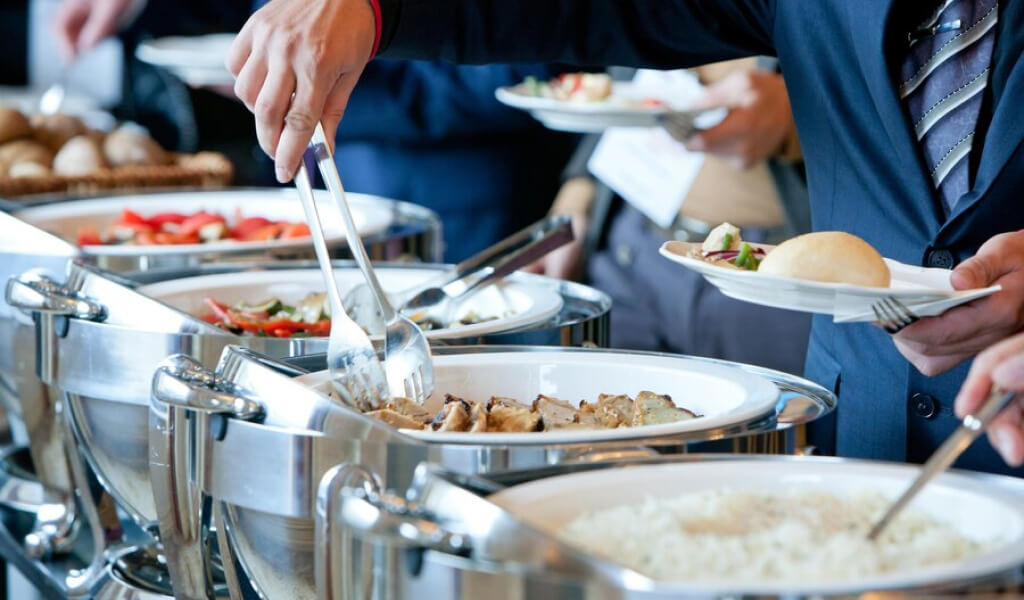Introduction to Restaurant Table Service

Restaurant table service encompasses the various methods and practices utilized by dining establishments to serve their guests. It involves a range of activities from taking orders, serving food and beverages, to managing the overall dining experience.
Understanding the different types of restaurant table service is crucial for both restaurateurs and patrons, as it significantly influences the quality of the dining experience. Various service styles can enhance or diminish the perceived value of a meal, impacting customer satisfaction and retention.
For restaurant owners and managers, selecting the appropriate type of table service can align with their business model, target market, and operational efficiency. For example, fine dining establishments typically employ a more formal and intricate service style compared to casual dining or fast-casual restaurants.
This guide aims to elucidate the most commonly found types of table service, providing insights into their unique characteristics and suitability for different dining contexts.
In the following sections, we will delve into specific types of restaurant table service, including French service, Russian service, American service, and buffet service.
Each type will be examined in detail, highlighting their procedural aspects, benefits, and typical settings. By the end of this guide, you will have a comprehensive understanding of how each service style operates and the contexts in which they are most effectively implemented.
American Service

American service, also known as plated service, is a prevalent style in many restaurants due to its efficiency and straightforward approach. In this type of table service, food is pre-plated and garnished in the kitchen, and then served directly to the guests by the waitstaff.
This method allows for a seamless dining experience, as the presentation of each dish is carefully controlled and consistent, ensuring that every guest receives their meal in the same manner.
The efficiency of American service makes it suitable for both formal and casual dining settings. In high-end restaurants, this service style allows chefs to showcase their culinary skills through meticulously plated dishes. In more casual environments, it helps streamline operations, reducing wait times and ensuring a steady flow of service.
This versatility is a significant advantage, making American service a popular choice across various types of dining establishments.
One of the primary benefits of American service is its speed. Since the food is plated and prepared in the kitchen, servers can deliver meals to guests more quickly compared to other service styles that involve tableside preparation.
This efficiency is particularly beneficial during peak dining hours, helping maintain a smooth and timely service. Additionally, the uniform presentation of dishes enhances the dining experience, as guests receive visually appealing and appetizing meals.
However, American service does have its drawbacks. One notable limitation is the reduced opportunity for customization. Because meals are pre-plated, it can be challenging to accommodate specific dietary preferences or special requests without disrupting the flow of service.
This lack of flexibility may not appeal to guests who prefer more personalized dining experiences. Furthermore, the reliance on kitchen staff to plate each dish means that consistency is paramount, and any deviation in presentation or quality can impact the overall guest experience.
Despite these challenges, American service remains a cornerstone of the restaurant industry. Its balance of speed, efficiency, and presentation makes it a reliable choice for delivering a high-quality dining experience across a range of settings.
French Service

French service, often synonymous with elegance and sophistication, is a dining style where food is partially prepared in the kitchen and finished tableside. This method showcases a theatrical element to dining, bringing an air of exclusivity and grandeur. The process starts with the preparation of dishes in the kitchen, but the final touches, such as carving, garnishing, or flambéing, are performed at the guest’s table using a gueridon, a trolley equipped with a portable stove.
One of the most defining aspects of French service is the role of the waiter, who must possess a higher level of skill and expertise compared to other types of table service. The waiter not only serves the food but also demonstrates culinary techniques with finesse and precision.
This requires extensive training and a deep understanding of both the cuisine being served and the art of presentation. Waitstaff in French service are often seen as a bridge between the kitchen and the dining room, ensuring that each dish is presented at its finest and that the dining experience is seamless.
The steps involved in French service are meticulous. Once the partially prepared dish arrives at the gueridon, the waiter completes the preparation in front of the guests. This could involve actions such as slicing meats, assembling salads, or flambéing desserts.
The interaction between the waiter and the guests adds a personal touch to the dining experience, making it feel more intimate and engaging. Guests have the opportunity to witness the final stages of their meal’s preparation, heightening their anticipation and enjoyment.
Due to its complexity and the level of skill required, French service is typically found in upscale dining establishments where the emphasis is on delivering a luxurious and memorable dining experience. It is a testament to the art of hospitality, where every detail is meticulously curated to provide guests with an unparalleled gastronomic journey.
Russian Service

Russian service, also referred to as platter service, is a distinctive style of restaurant table service characterized by its elegance and grandeur. In this type of service, the food is meticulously prepared and arranged on large platters in the kitchen.
These platters are then brought to the dining table, where the server portions out the food directly onto the diners’ plates. This method not only ensures that each guest receives an equal share of the dish but also allows for a visually appealing presentation that enhances the dining experience.
The communal aspect of Russian service is one of its most significant features. By presenting food on large platters from which everyone at the table can be served, it creates a sense of abundance and shared enjoyment.
This approach fosters a more interactive dining experience, encouraging conversation and engagement among guests. As such, Russian service is particularly well-suited for banquets, large gatherings, and special occasions where the emphasis is on communal dining and celebration.
However, executing Russian service effectively requires a high level of skill and precision from the serving staff. Servers must be adept at handling large platters and portioning out food efficiently and gracefully.
Their ability to do so not only ensures a smooth and seamless service but also contributes to the overall ambiance and satisfaction of the dining experience. The need for skilled servers makes Russian service a more labor-intensive option compared to other types of table service.
In conclusion, Russian service stands out for its communal nature and the sense of abundance it brings to the dining table. Its suitability for large gatherings and banquets, combined with the need for skilled servers, makes it a unique and sophisticated choice for those looking to create a memorable dining experience.
Buffet Service

Buffet service is a popular dining option where guests serve themselves from an assortment of dishes displayed on a buffet line. This style of service is particularly appealing for casual dining environments and large events, owing to its inherent variety and flexibility.
Diners enjoy the freedom to choose from a wide range of foods, accommodating diverse tastes and dietary preferences. This makes it an ideal choice for gatherings where guests have varying culinary interests.
One of the primary advantages of buffet service is the reduction in labor costs. Since guests serve themselves, fewer waitstaff are required compared to traditional table service. This not only lowers operational expenses but also allows the staff to focus on maintaining the buffet line and ensuring that dishes are frequently replenished. Additionally, buffet service can be set up efficiently, allowing for a quick turnaround between different dining times or events.
Buffet service also offers the benefit of catering to a broad audience with minimal effort. The extensive selection of dishes ensures that there is something for everyone, making it easier to satisfy a large and diverse group of diners. This variety can enhance the dining experience, as guests have the opportunity to try multiple dishes and return for seconds, should they choose.
However, buffet service is not without its drawbacks. One significant concern is the potential for food waste. Since guests serve themselves, it can be challenging to predict the exact amount of food needed, often resulting in excess leftovers.
Moreover, the need for constant replenishment can be labor-intensive and may require meticulous planning to ensure that food remains fresh and appealing throughout the service period.
Despite these challenges, buffet service remains a favored choice for many due to its versatility and cost-effectiveness. With careful management and strategic planning, the benefits of buffet service can outweigh the potential downsides, making it a viable option for a wide range of dining scenarios.
Family Style Service

Family style service is a distinctive and convivial approach to dining, where large portions of food are placed on the table for guests to serve themselves.
This communal dining experience emphasizes sharing, fostering interaction and a sense of togetherness among diners. It is particularly well-suited for casual and celebratory gatherings, where the focus is on enjoying the company of others as much as the food itself.
In family style service, dishes are typically presented in large serving bowls or platters, allowing guests to help themselves to the portions they desire. This method not only encourages a relaxed and informal atmosphere but also promotes social interaction, as diners often engage in conversations while passing dishes around the table.
The act of sharing food can create a more intimate and enjoyable dining experience, making it a popular choice for family reunions, holiday feasts, and other special occasions.
However, there are important considerations to keep in mind to ensure the success of family style service. Portion control is crucial to prevent food waste and ensure that all guests are adequately served. It is essential for the host or restaurant staff to carefully estimate the quantity of food needed based on the number of guests and their appetites.
Additionally, providing a variety of dishes can accommodate different dietary preferences and restrictions, further enhancing the dining experience for everyone involved.
Overall, family style service offers a delightful and engaging way to enjoy a meal with others. By prioritizing communal dining and the joy of sharing, it creates a warm and inviting atmosphere that can make any gathering more memorable. Whether for a casual get-together or a festive celebration, this service style brings people together in a unique and meaningful way.
Butler Service

Butler service represents a more personalized and exclusive form of restaurant table service, characterized by a high level of attentiveness and sophistication. Central to this type of service is the presence of a butler or dedicated server who attends meticulously to each guest’s needs. Unlike other forms of service where multiple staff members may interact with the guests, butler service provides a singular point of contact, ensuring consistency and a deeply personalized dining experience.
This service style typically involves the butler or server presenting and serving food and beverages directly upon request. The process often begins with a detailed consultation with the guests to understand their preferences and expectations.
Throughout the meal, the butler may perform additional tasks such as pouring drinks, refilling glasses, and clearing plates, all executed with a level of precision and care that underscores the exclusivity of the service.
One of the defining characteristics of butler service is its suitability for luxury dining environments and private events. Whether in a high-end restaurant or a private function, the presence of a butler adds an element of prestige and elegance.
This type of service is particularly popular in settings where an intimate and customized experience is paramount, such as in fine dining restaurants, luxury hotels, and exclusive private gatherings.
In essence, butler service is designed to offer an elevated dining experience where guests can expect seamless and attentive care. The butler not only serves as a server but also as a personal attendant, ensuring that every aspect of the dining experience is tailored to the guests’ desires.
This high level of service is reflective of the broader trend in the hospitality industry towards personalization and luxury, catering to clientele who value exclusivity and exceptional service.
Choosing the Right Table Service for Your Restaurant

Selecting the appropriate type of table service for your restaurant is a critical decision that can significantly impact the dining experience, operational efficiency, and overall brand identity. To make an informed choice, several key factors need to be considered, including the restaurant’s concept, target clientele, and operational logistics.
The restaurant’s concept is the cornerstone of this decision. For instance, a fine dining establishment offering a luxurious, multi-course meal would benefit from formal table service. This type of service, characterized by well-trained waitstaff and meticulous attention to detail, aligns perfectly with a high-end dining experience. Conversely, a casual eatery serving quick, affordable meals might opt for counter service or a hybrid model that combines elements of table service and self-service.
Understanding your target clientele is equally essential. Families with young children may prefer a more relaxed and efficient service style, such as family-style or buffet service, where they can enjoy a variety of dishes with minimal waiting time.
On the other hand, business professionals might appreciate a more structured and formal dining experience, where they can conduct meetings and enjoy their meals without interruptions.
Operational logistics also play a significant role in choosing the right table service. The layout of the restaurant, the number of staff, and the kitchen’s capacity to handle different service styles must all be taken into account.
For example, a small bistro with limited kitchen space might struggle with the demands of a full-service model, whereas a larger restaurant with sufficient staffing can manage it efficiently.
Examples of successful implementations can provide valuable insights. For instance, many upscale restaurants have thrived by adopting a formal table service model, creating a memorable dining experience that keeps customers coming back.
On the other hand, casual dining chains have found success with a more streamlined approach, such as fast-casual or counter service, which caters to customers seeking quick, convenient meals.
Training staff for each type of service is crucial for maintaining consistency and quality. Regular training sessions, clear guidelines, and performance evaluations can help ensure that staff members are well-prepared to deliver the chosen service style effectively. Investing in staff training not only enhances the dining experience but also reinforces the restaurant’s brand and reputation.
Ultimately, the goal is to align the table service with the overall dining experience and brand identity. By carefully considering the restaurant’s concept, target clientele, and operational logistics, and by investing in staff training, restaurant owners can create a cohesive and enjoyable dining experience that resonates with their customers and stands out in a competitive market.
Selecting the right table service is crucial, but equally important is investing in the right technology to ensure your restaurant operates smoothly and meets your customers’ expectations. Priority1 POS offers comprehensive POS solutions that allow you to concentrate on growing your business while delivering exceptional service to your customers.
Our thoughtfully designed POS system includes customer-centric online ordering, user-friendly self-ordering kiosks, effective loyalty programs, and an efficient kitchen display solution. With Priority1 POS, you have everything you need in one place to enhance your restaurant’s operations and customer satisfaction.
Contact us at [email protected] to learn more or to schedule a quick call with our team.

 Cart is empty
Cart is empty 

